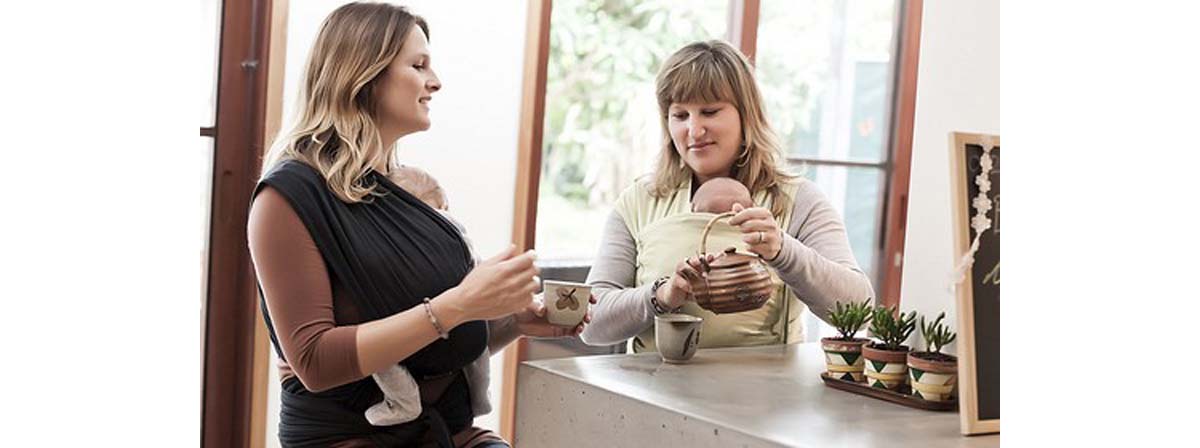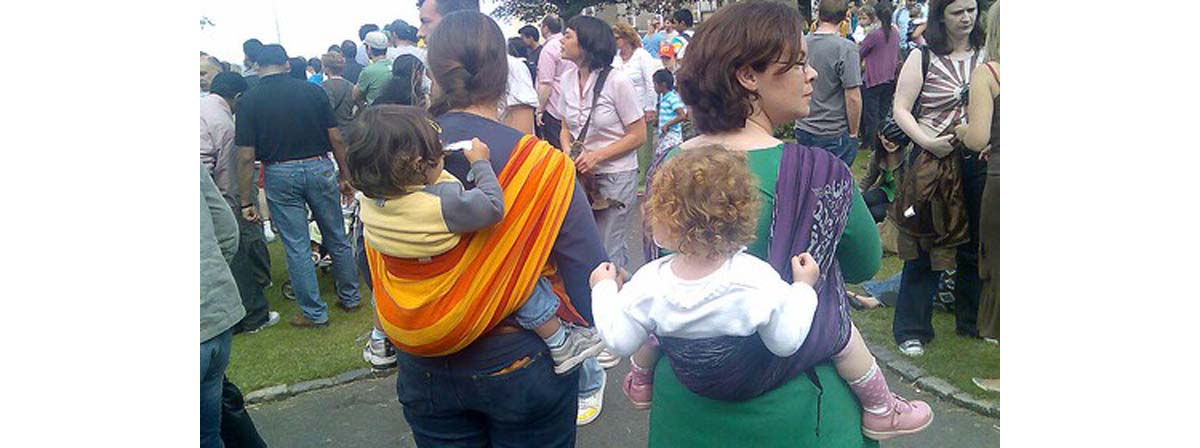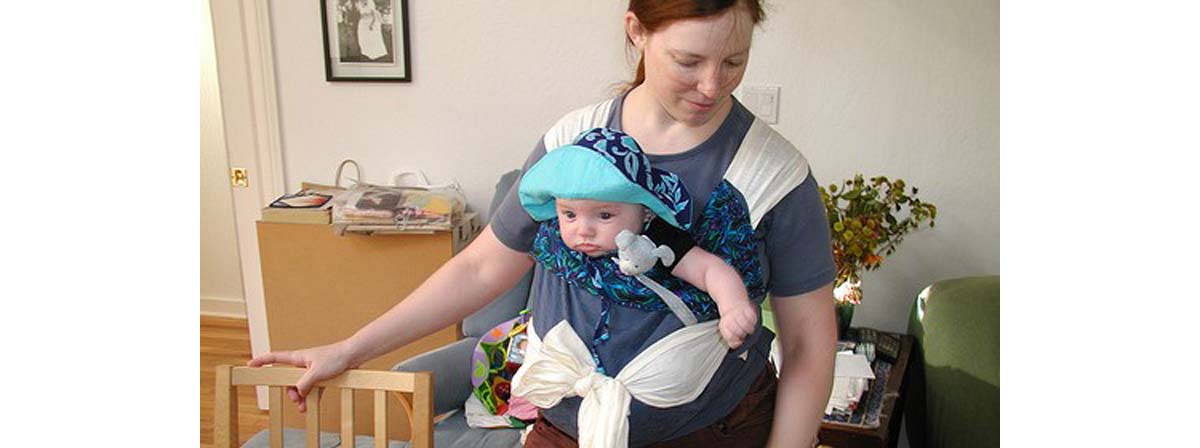When I was 30 weeks pregnant with my daughter, I finally felt confident that I wouldn't have another miscarriage — and we went shopping. I remember exactly how excited I was to stock up on all that essential (and not so essential) baby gear. We'd be decorating the nursery after receiving all the stuff we ordered. DIY is always cool, but I was most thrilled to be choosing a stroller.

I already knew that I wasn't going to be one of those moms who never got out the house after having a baby, so I needed a stroller of excellent quality; one that could withstand every terrain. We opted to purchase a Ferrari-red travel system that included a stroller with huge, all-terrain wheels, a car seat, and a bassinet that the baby could sleep in at home but that could also click right into the stroller.
It wasn't just Ferrari-red — it was the Ferrari of strollers (at the time, anyway), and it cost much more than I'd be willing to spend today.
We pushed that stroller around the baby supplies shop for a good while before deciding that it was the right one for us. Another great thing about the stroller was that the color we chose was gender neutral, so a next baby would also be able to use it as well.
I wasn't so excited when I took the baby out in her stroller by myself for the first time, though — I encountered obstacles everywhere. When the lift in our building broke down and I had to carry the baby and her stroller up four floors, I could have cried (and probably did). Narrow aisles in stores were a nightmare too. Of course, strangers offered to help me by carrying my baby into stores with stairs, but I was a paranoid (or simply vigilant?) new mom, and I wouldn't let anyone touch my child.
Taking my baby out was very stressful, until my husband asked me why we didn't get “one of them baby carriers”. That was a great idea I hadn't even thought of. He went to Chicco and got me a baby carrier. He changed my life. I never used the stroller again. When we had another baby, I moved babywearing to a whole new level with all sorts of (mostly home-sewn) baby carriers.
I tried everything: wraps, mei tais, podaegis, pouch slings, and the Ergo Baby Carrier. In the next few sections, we'll take a look at the practical and emotional benefits of wearing your baby in a carrier. I'll also briefly go through the different types of baby carriers and how they work, to help you figure out which type of carrier may be best for you.
How Babywearing Can Make Your Life Easier
Strollers have become the default mode of transport for modern infants, but there are many situations in which they are simply not practical. Carrying your baby in your exhausted arms while you're also fighting with a stroller and a ton of shopping bags is a nightmare — and a dangerous one at that.

Some contexts in which baby carriers are more practical than strollers or just carrying a baby in your arms are:
-
On public transportation
-
At the airport
-
In shopping malls (unless you will be trying clothes on)
-
While hiking
-
Whenever you could encounter terrain that doesn't really combine well with strollers
-
If you live in an apartment on a high(ish) floor in a building without a lift
If you have a great baby carrier, you can nurse your baby while you are on the go — without anyone noticing. If you have a fussy baby who likes to be near you all the time, wearing your baby around the house allows you get things done. Most parents are exhausted during the first few months. A baby carrier also allows you to relax and read a book or browse the internet without a screaming baby.
Wearing your child — from newborn to toddler — on your front or back also provides you with the opportunity to go for long walks to stay fit. The extra weight you carry around will help you get back into shape. Your baby will be soothed by the rhythmic movements of your body while you walk and be under the impression she's back in the womb as she falls asleep. Your toddler will be able to see an awful lot more of the world while riding comfortably on your back, and his legs won't get tired.
Baby carriers are also awesome from a safety point of view. You have your child with you at all times. He can't fall out of the stroller or mess with moving wheels, and nobody can take your baby without you noticing.
Emotional Benefits Of Wearing Your Baby
Babywearing is often associated with a child-rearing approach called “attachment parenting”. Parent-child bonding is a top priority in this philosophy. Dr William Sears, a pediatrician, is one of the most well-kn own advocates of attachment parenting out there. On his website, Dr Sears makes the following claims about the emotional benefits of babywearing:
-
Babywearing makes babies cry less, and babies in cultures where babywearing is the norm are generally less fussy.
-
Babies who are often carried around in baby carriers learn more, both because they spend less time crying and because being relatively high up compared to a stroller or crib allows them to see much more of the world. Seeing stuff stimulates a baby and helps with brain development.
-
Wearing your baby in a carrier will make it easier for you to constantly interact with your baby, which benefits him emotionally.
Babywearing is terrific, and definitely not just for those who would call themselves attachment parents. It is for any parent who wants to stay sane and mobile — it's a no-nonsense approach to getting on with your life after you have a baby.
I'd describe myself as an out-of-the-box parent, and I believe babywearing helps both parents and babies emotionally by:
-
Making the baby feel secure close to mommy (or daddy) and giving her constant and easy access to breast milk.
-
Freeing the parent's hands up for lots of different activities, thereby promoting sanity and reducing stress.
-
Allowing the baby to sleep whenever she's tired, eliminating the parent's need to plan their life around the baby's sleep schedule.
-
I agree with Dr Sears that being so close together (literally!) encourages interaction and bonding.
Which Baby Carrier Is Right For You?
With so many carriers on the market, choosing which one is right for you may be tough. You may have a babywearing support group in your neighborhood, and those often let parents try out different carriers so they know the pros and cons of each. If you don't have a local babywearing group, the internet is your biggest help.

The Baby Bjorn and similar carriers made by different companies were, up until very recently, the only type of baby carrier most parents in western countries would come across. These carriers can exclusively be worn on the parent's abdomen — either facing in or out. Two shoulder straps support the whole operation, though there are various straps and buckles in different places to keep the baby secure. The Baby Bjorn is great, but it will make your shoulders hurt once your baby gets a bit bigger.
The mei tai is an Asian baby carrier consisting of a baby-sized “blanket” and four straps at its corners. These carriers are made entirely out of fabric, and the straps are used to secure the mei tai to the parent's body in a variety of ways. Mei tais often come in colorful, pretty fabrics and can comfortably be used from birth to toddlerhood.
The Ergo Baby Carrier is a popular carrier that uses the same principles as the mei tai, but with shorter straps and buckles instead of long fabric straps. Parents who want to use this carrier from birth will need to purchase an infant insert. The Ergo looks sporty and it's the only carrier my husband would wear.
A wrap is simply a very long and pretty wide piece of fabric. Wraps can be woven or stretchy and come in different lengths. Placing a baby in a wrap has a learning curve, and you can almost call it an art. Wraps can securely carry babies on your abdomen, back, and hips, and they'll even fit twins without a problem.
If you would like to try using a wrap, I'd strongly recommend using YouTube to learn about the various “carries”. Even better, find a babywearing group and get a live demonstration.
A podaegi is a traditional Korean baby carrier that consists of a very wide blanket and straps. It is used to carry babies of all ages on a parent's back. Having lived in Korea, I acquired a few of these carriers and noticed that they're designed to work very well with traditional hanbok clothes, but not so suited for the modern parent. A podaegi is unique in that it is tied around the torso and doesn't put any weight on the shoulders (but can also slip down, if you don't tie it right). They're great in the winter, but not suitable for hot weather in my experience.
Slings are carriers that are worn around one shoulder. Babies can ride in slings in various positions. The “cradle” position curls a newborn comfortably into the fabric, while older kids can simply sit in the carrier, resting on the parent's hip. You get ring slings, which are adjustable, and pouch slings, which aren't. Slings only give you one free hand. You'll still need to support your child with the other hand. They also place a lot of weight on only one shoulder. For this reason, I'm not a fan of slings — but you might be.
- Photo courtesy of Suzanne Shahar by Flickr : www.flickr.com/photos/hugabub-babywearing/8137767144/
- Photo courtesy of Anja by Flickr : www.flickr.com/photos/10506622@N06/1248804701/
- Photo courtesy of Lisa Dusseault by Flickr : www.flickr.com/photos/milele/518517328/


Your thoughts on this